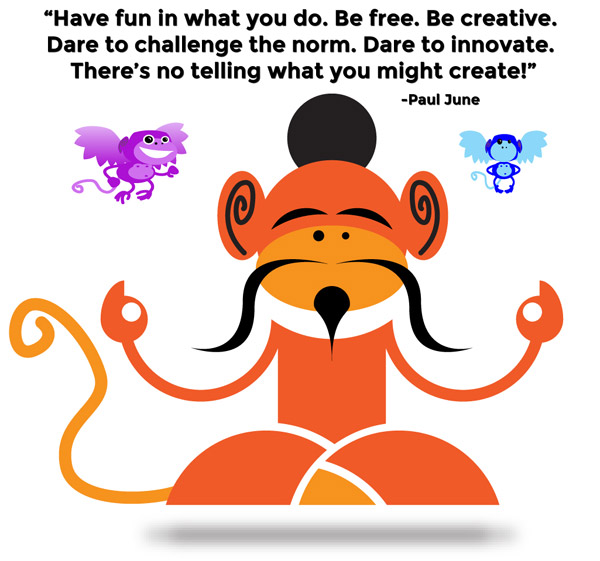Can you feel it?
The sun’s rays are warmer, the Santa Ana winds are dying down, and soon crocuses and other early bloomers will be on full display.
Spring is definitely in the air.
With each spring comes a sense of renewal. Though we in southern California don’t have the seasonal shifts our friends to the north have (snow anyone?), and temperatures this “winter” were certainly more spring and summerlike than usual, there’s just something that happens come March and April that puts an extra spring in my step. Maybe it’s the longer days, the height of the sun, or the return of free open air concerts. Whatever it is, spring and the knowledge that summer is soon to follow, just seems to make things more alive, more FUN.
For those who know me and/or read this blog regularly, you know that FUN is my middle name (well, not literally, but figuratively it is!). With fun comes energy, enthusiasm, and the incessant desire to create. A few springs ago, I wrote a blog about “creativity” and how its most important ingredient is FUN.
Here’s that blog again . . . my “Theory of Creativity.” Have fun reading it, and may it inspire a little creativity in you.
Paul’s “Theory of Creativity”
(Originally posted on April 3, 2012)
Creativity is amazing. Seemingly out of thin air, creative types produce great works of art and literature, they innovate with architecture, technology, medicine, song. If you can name it, chances are there was a creative person behind it.

You think Albert Einstein wasn’t creative when he came up with the theory of relativity? Think again. Imagine the amount of creativity it took for him to challenge the conventional thinking of the day and go way beyond the limits of what he could easily see, feel, hear, and touch. No one had ever thought that way before. Now that’s creativity!
But here’s the reality check. Creativity doesn’t just happen. It’s not automatic, nor does it grow on a tree. If it did, I’d plant a creativity tree in my backyard, right next to the money tree (which is right next to my ever-bearing banana tree!). Creativity takes time, effort, patience. There are a lot of hours and a lot of sweat that go into being creative.
Take building a Web site for example. When the Barrel O’Monkeyz team engages in creating a Web site for a client, there’s a lot of creativity that goes into writing, designing, programming, and even the logistics of implementation. Sure, you could just use some ready-made, off-the-shelf template that looks like hundreds of other Web sites out there, deem it good enough, and hope that it brings you business—but chances are it won’t, at least not to its full potential. Without creative thinking to match the Web site’s look, feel, message, and functionality to your target audience, chances are you’re in for a letdown (this is where I insert my “you get what you pay for” refrain).
For any project—from Web sites to collateral pieces to new product development—the creative process involves going from strategy and concept (figuring out the why and how) to determining requirements (what’s needed for success and setting expectations) to drafting and mocking-up what the concept will look/act like (this is the stage where changes can be made easily) to finished creative (where everything comes together), which sets the stage for implementation, execution, measurement, and refinement.
Of course, all this talk about creativity begs the question, “Can creativity be taught?” (And, if so, wouldn’t that just be fantastic . . . and by the way, I’ve got a tree for you to plant!)
Personally, I don’t believe creativity can be taught, and I’m not alone. In a blog on the Psychology Today Web site about government efforts to mandate teaching creativity in our schools, Michele and Robert Root-Bernstein write that they believe while certain creative habits and behaviors “can be modeled in the classroom,” creativity itself can’t be taught. They argue that the steps in the process of being creative can be taught, but the essence, the secret sauce that makes one creative, cannot.
So here’s where my “Theory of Creativity” kicks in: Creativity can’t be taught, but it can be nurtured, enhanced, cultivated, and encouraged over a lifetime. And the main ingredient necessary for creativity to flourish—from success at work or at home, in business or at play, from success in your relationships with peers or family and loved ones—is FUN.
Without fun, you won’t feel free to create, to innovate, to invent. And while putting together that Web site or book or series of collateral pieces might not be seem on par with Edison inventing the light bulb or Bell inventing the telephone, it’s all part of the creative process.
So, have fun in what you do. Be free. Be creative. Dare to challenge the norm. Dare to innovate. There’s no telling what you might create!
Recommended Reading—Check this book out “Jump Start Your Brain” by Doug Hall for an inspiring read on how to deliver top-shelf creative results.
What about you? What are your thoughts on creativity? How does creativity play a role in your business or personal life? How do keep things fun?

Trackbacks/Pingbacks